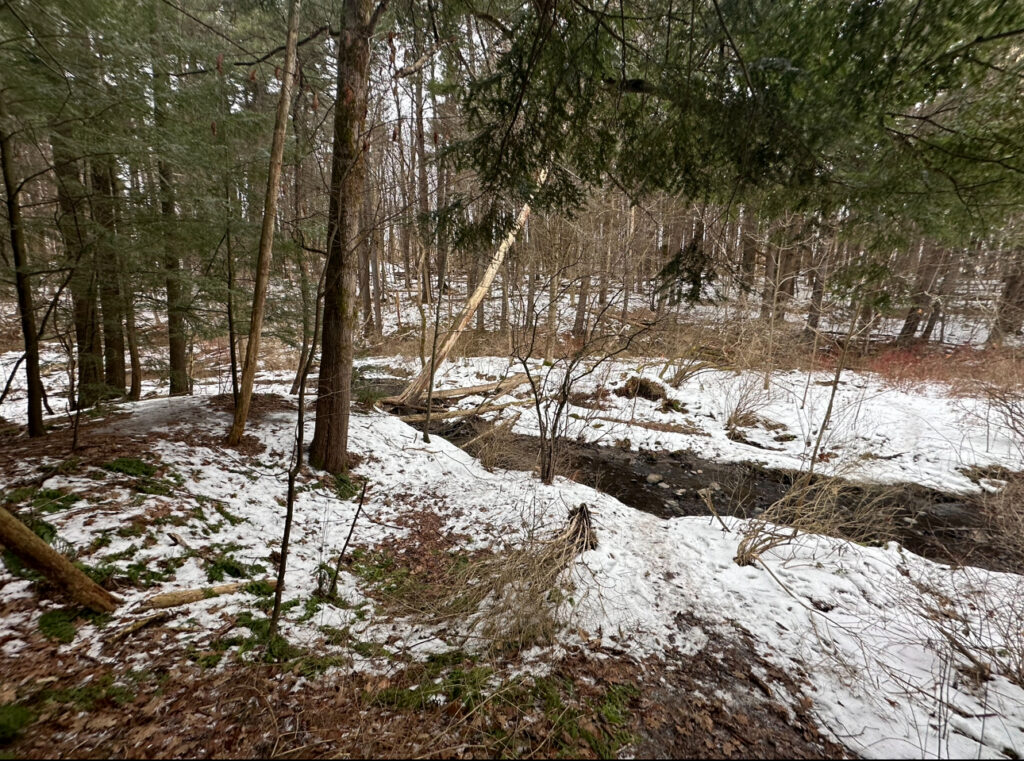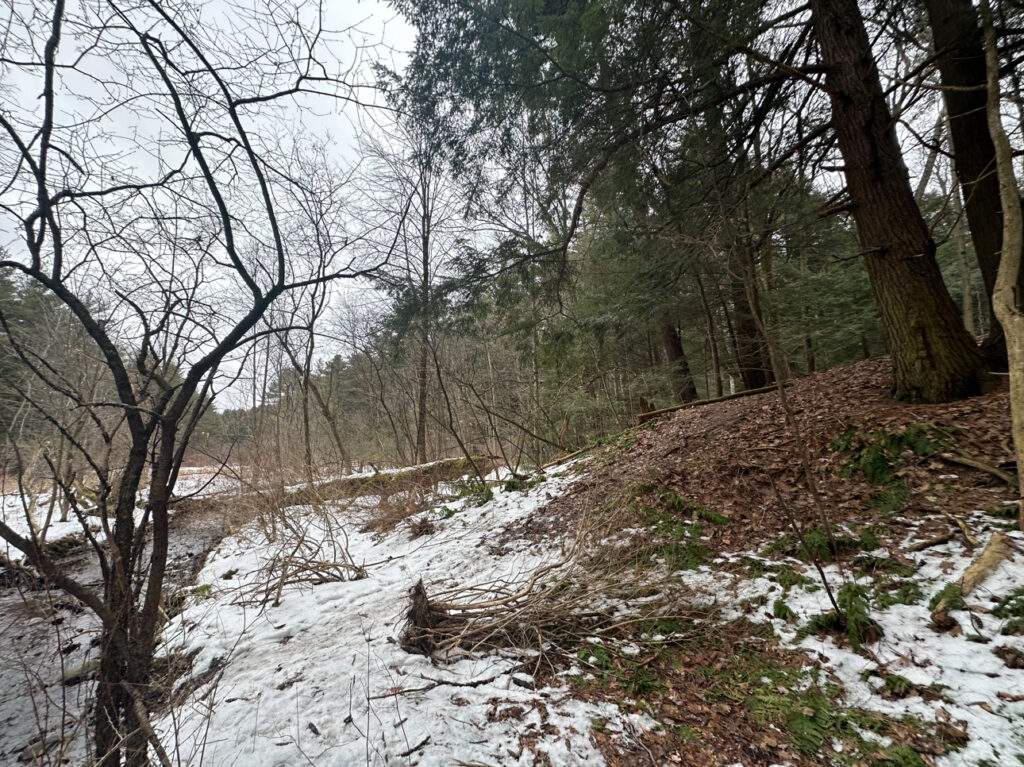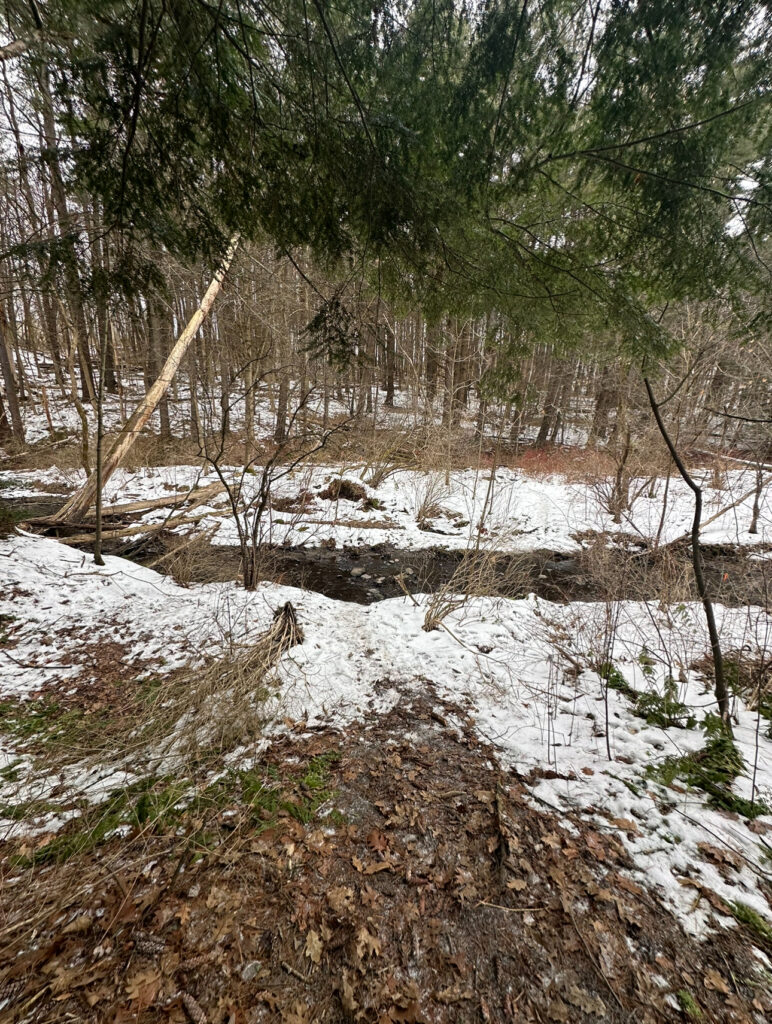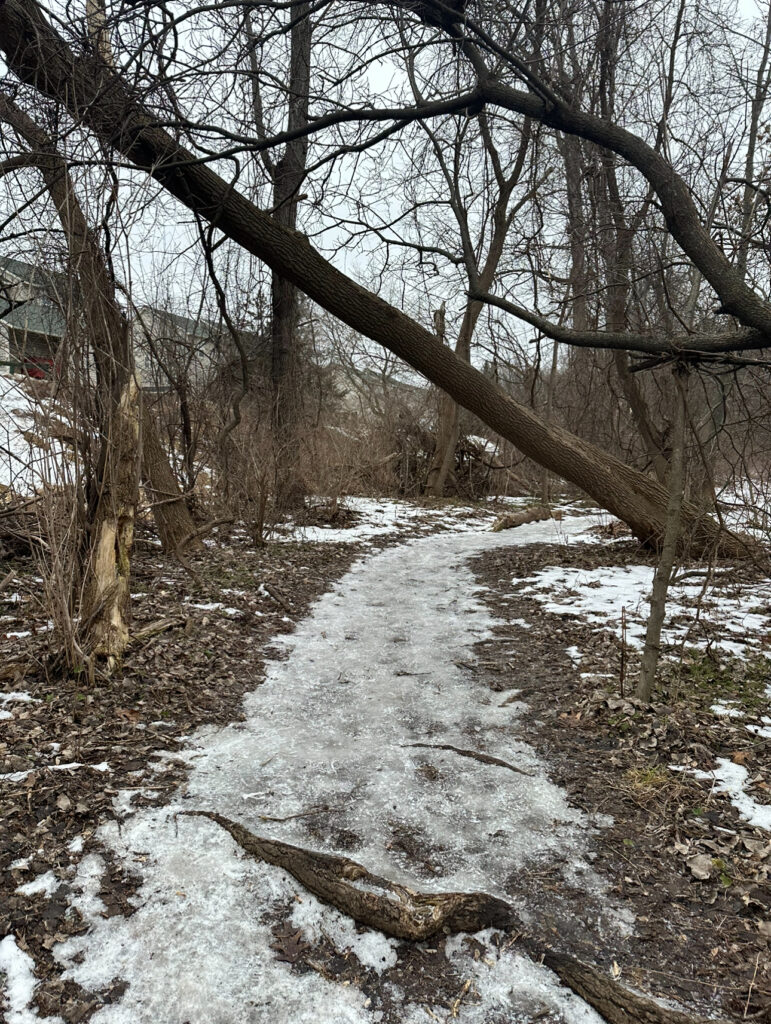Returning Visit
°❆⋆.ೃ࿔*:・ Welcome back, folks! Today I took my first visit back to Centennial Woods, and it was a journey. For starters, I do not think I have seen a place so icy yet also so muddy at the same time before. These factors made it quite difficult to get to my precise location, as the melting and refreezing became a mix of ice and mud.
A documented section of my journey to my phenology blog spot
One thing I was surprised about was the amount of ice and snow still on the ground, as majority of the snow has melted on campus. The snow on the ground did allow for some tracking, as I was able to see some prints in the snow! Majority of the prints were human shoe prints, but there were some animal prints in the snow as well. I believe the prints were from someone’s pet dog, but it was still cool to be able to see some prints in the snow. No matter the animal species, the tracks were mostly found near the river which I found interesting.



Now for the true phenological changes, the are was more barren than last semester. All of the trees were bare & branched for the exception of the coniferous Eastern Hemlocks. There were also fewer ferns in the area, even though there were more than I thought there would be, but they were much more scattered than at the end of the fall semester. The buckthorn that was uprooted still sits in its same place, rearing its invasive head even as a fallen part of the ecosystem. There was a decent portion of melted land in the area, where the layers of leaf litter peaked through the icy sheet. Fallen leaves, pinecones, and scattered ferns indicate a likelihood of increased wind with the colder weather, making my spot feel slightly more chaotic than it did last semester, almost changing appearance with my inner thoughts & feelings.


As I left my spot to head to my last class of the day, the winter weather trek back brought some questions along with it. Firstly, as I was struggling to walk back to my class, I wondered if the animal life in the area have the same difficulty moving on the ice as we do or if they have adaptations for the icy trails? I would assume they at least know how to move around the climate (unlike me) so it was just interesting to think about animal’s learned behaviors and adaptations with various climates. The other question I developed was about the trail ecosystem itself. Me, along with many others have been skirting around the icy trail as best as we can to avoid slipping, but I wonder if this destroys the plants and other vegetation off the trail, even under the ice and snow. I am eager to keep returning to my phenological location and documenting more changes as the weather continues to change (either warmer or colder) over the semester!


